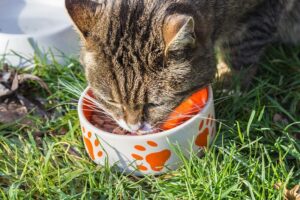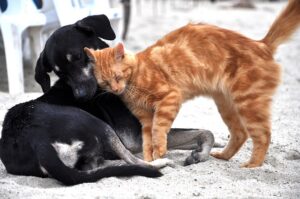Introduction
The fact that so many options are there, you can find it difficult to choose the right kind of food for your pet. Organic vs. Non-organicOne of the first things you may have to decide is if you will feed your pet organic or nonorganic food. Knowing the differences between these two kinds of pet food will help in making an informed decision for the health of your four-legged friend.
What is Organic Pet Food?
Organic pet food is produced from ingredients that are farmed and processed under extremely stringent guidelines put forth by the organic certification agencies. These guidelines make sure that the food is void of synthetic pesticides, herbicides, antibiotics and genetically modified organisms or GMOs.
Key Features of Organic Pet Food:
- No Synthetic Chemicals: Organic cat chow doesn’t possess artificial chemicals like preservatives, synthetic pesticides, and herbicides that are not found in organically grown food.
- No GMOs: Organic cat food ingredients are never altered at the genetic level, resulting in a more holistic product.
- Ethical Animal Treatment: Animals from which organic meat products are derived are generally raised in more sustainable environments and given access to the outdoors, and neither they nor their feed receive any medication or growth hormone.
- Sustainable Farming Practices: Organic farming practices are inherently sustainable, utilizing environmentally friendly methods such as crop rotation and organic fertilization.
What is Non-Organic Pet Food?
Ordinary pet food, also called non-organic pet food, does not have all the prerequisites that organic food has. Some even include things like synthetic chemicals, GMO’s and other fillers.
Key Features of Non-Organic Pet Food:
- Use of Synthetic Chemicals: Non-organic pet food is sometimes raised with the use of synthetic pesticides, herbicides and fertilizers.
- GMOs: Traditional and non-organic pet food contains ingredients that may have been genetically altered to increase yields, and resistance to pests.
- Additives and Preservatives: To make your pet’s food more appealing, looking and longer shelf life, nonorganic pet foods frequently times need artificial colors, scents and preservatives.
- Less Stringent Animal Welfare Standards: Animals are confined and routinely given antibiotics or other medications to promote growth.
Nutritional Differences
Both organic and non-organic pet foods have the ultimate goal of offering balanced nutrition for animals but however, they may have some distinct differences in their nutritional arrangements.
Organic Pet Food:
- Higher Nutrient Quality: Organic items are typically, but not always, fresher because they do not contain preservatives that make them last longer.
- Reduced Allergens: Are not as likely to contain artificial flavorings or preservatives, all of which can be common allergens for cats.
- Easier to Digestibility: Some pet owners claim that their pets have better digestion and overall health when the food is organic.
Non-Organic Pet Food:
- Variety and Availability: You will see there is much more choice in the pet range available as well because non-organic food is crafted with essential and natural ingredients that help stabilize the development of your dog.
- Cost-Effective: Non-organic options are usually cheaper than organic pet food, so all pet owners will be able to afford them.
- Added Nutrients: Some non-organic cat foods may contain supplemental vitamins and minerals for your cat’s health.
Environmental Impact
Another consideration is the environmental impact of organic versus non-organic pet food.
Organic Pet Food:
- Reduced Chemical Use: Organic grains defend themselves because crops are largely not sprayed with chemical pesticides, along with significant results on flora health; without regularly spraying soil and water with synthetic fertilizers or other poisonous materials like chemicals, the amount of pesticide toxin enters land and water resources.
- Sustainable Practices: By farming organically, we help wildlife, maintain soil health, and keep our land use sustainable.
Non-Organic Pet Food:
- Higher Chemical Use: Conventional farming relies on the use of these synthetics, which can result in harm to our environment.
- Resource Intensive: Non-organic farming can be more resource-intensive, thus contributing to environmental degradation.
Making the Right Choice for Your Pet
Ultimately, deciding between organic and non-organic pet food will depend on a few different things, such as your pets dietary requirements, how much you are willing to pay for proper nutrition, and what you want to support in the market.
Considerations for Choosing Organic Pet Food:
- Organic food is a good option for pets with allergies or sensitivities.
- For those who care about the source or animal health, organic pet food is a better option to embrace these ideals.
Considerations for Choosing Non-Organic Pet Food:
- In this case, non-organic pet food could be your most affordable option, but one that is still nutritionally appropriate
- When non-organic food is available in the diet without any problems for your pet (> 90 % of the time), then not being organic is ok.
Conclusion
Being aware of what each form of pet food entails can help you determine if organic or non-organic pet food is the choice for your beloved family member. Neither option is wrong, and there are pros and cons to each, so weigh them against your dog’s long-term happiness before making a decision.




